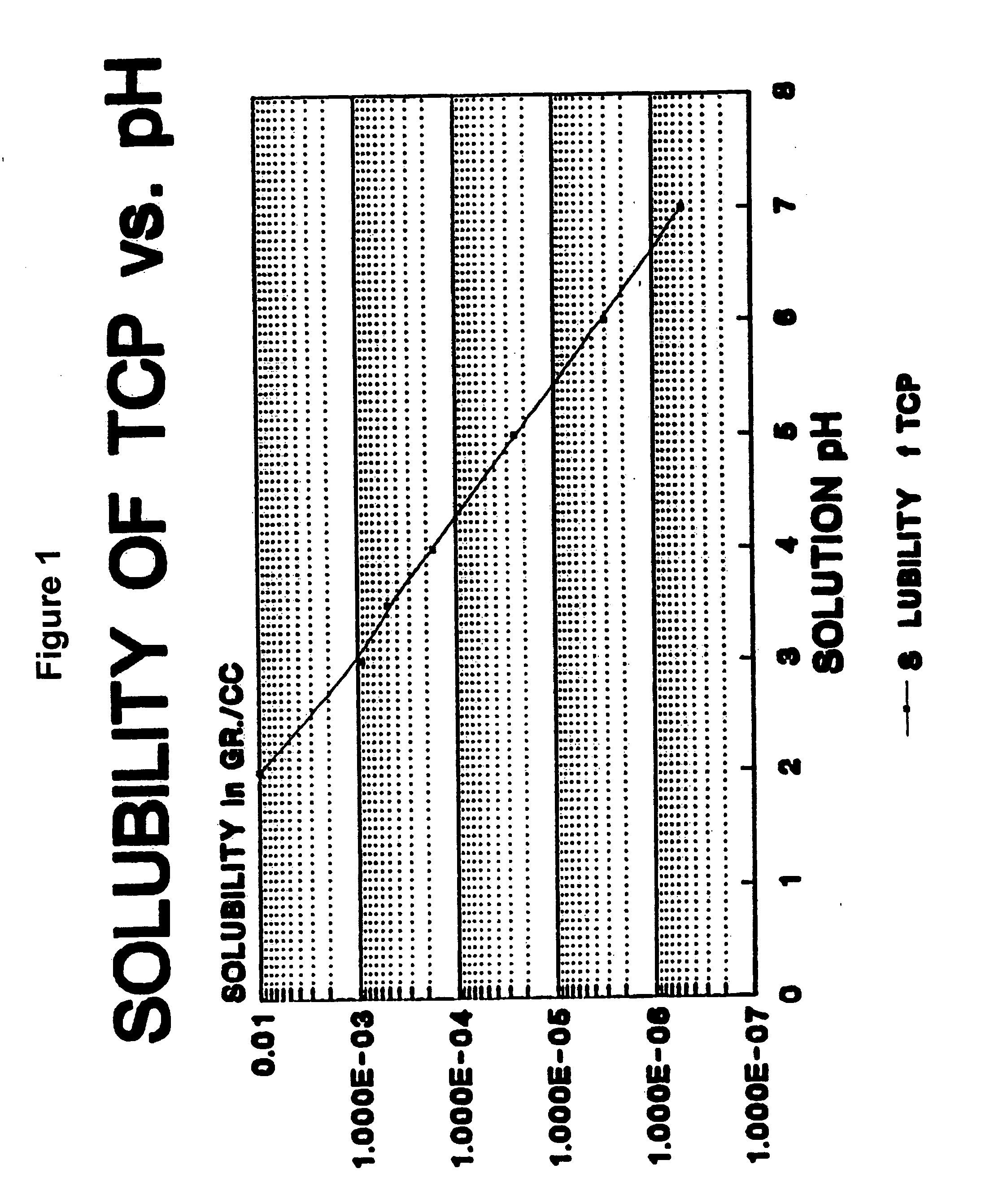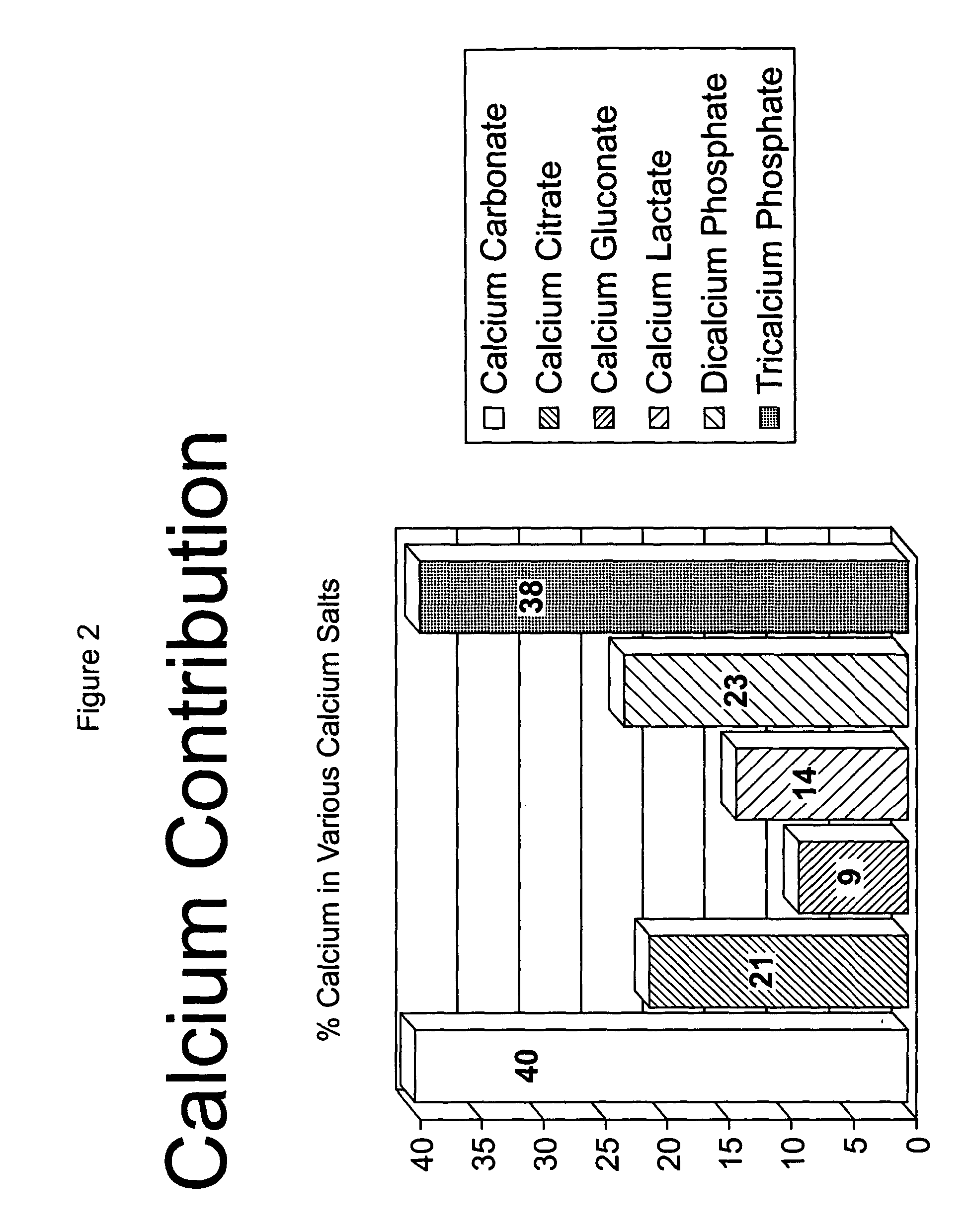Compositions and methods of addition for calcium supplementation in transparent beverages using tricalcium phosphate
a technology of tricalcium phosphate and calcium supplementation, which is applied in the field of compositions and methods of addition for calcium supplementation in transparent beverages using tricalcium phosphate, can solve the problems of limiting the level to which it can be included in food products, accelerating the bone loss rate leading to osteoporosis, and adversely affecting the organoleptic properties of the food product to which it is added
- Summary
- Abstract
- Description
- Claims
- Application Information
AI Technical Summary
Benefits of technology
Problems solved by technology
Method used
Image
Examples
example 1
[0046] This example demonstrates a preparation of TCP to meet 10% (100 mg) of the calcium RDA in one-100 ml serving. About 2.7 grams of TCP were dissolved in 100 mL of a citric acid solution, while maintaining a pH of about 2.5 to about 3.0. This resulted in about 10.23 mg of calcium per milliliter of citric acid solution. About 10 ml of this TCP / citric acid solution was added to 90 mL of the beverage of choice, e.g. apple juice. This resulted in about 102.3 mg of calcium per 100 mL of beverage. The resulting calcium-supplemented beverage contains no visible TCP precipitates or particles and did not have a “gritty” mouth-feel taste. The experiment was repeated with a different amount of TCP to create a calcium-supplemented beverage containing up to 50% of the RDA for calcium per serving. The resulting calcium-supplemented beverage contains no visible TCP precipitates or particles and did not have a “gritty” mouth-feel or chalky aftertaste.
PUM
 Login to View More
Login to View More Abstract
Description
Claims
Application Information
 Login to View More
Login to View More - R&D
- Intellectual Property
- Life Sciences
- Materials
- Tech Scout
- Unparalleled Data Quality
- Higher Quality Content
- 60% Fewer Hallucinations
Browse by: Latest US Patents, China's latest patents, Technical Efficacy Thesaurus, Application Domain, Technology Topic, Popular Technical Reports.
© 2025 PatSnap. All rights reserved.Legal|Privacy policy|Modern Slavery Act Transparency Statement|Sitemap|About US| Contact US: help@patsnap.com


